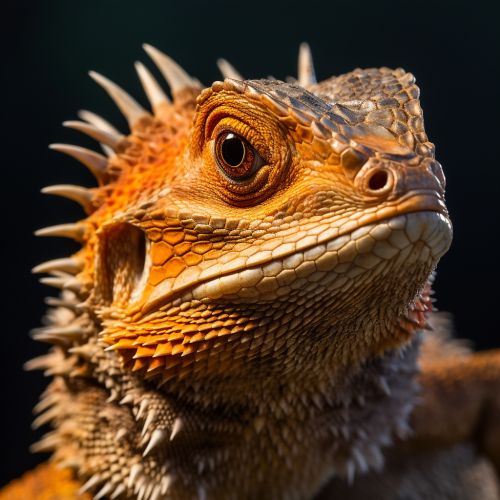Squamata
Taxonomy and Evolution
The order Squamata, which includes lizards and snakes, is the largest order of reptiles, comprising over 10,000 species. The order is part of the class Reptilia, which also includes turtles, crocodilians, and birds. The name Squamata, derived from the Latin 'squamatus', means 'scaly', referring to the characteristic scales present in this group of animals.


The Squamata order is further divided into three suborders: Iguania, Scleroglossa, and Amphisbaenia. The Iguania includes iguanas, chameleons, and related species. The Scleroglossa includes all other lizards and snakes, and the Amphisbaenia includes worm lizards.
The Squamata order is believed to have evolved around 200 million years ago during the Mesozoic era, also known as the Age of Reptiles. The earliest known squamates are from the Jurassic period and are more closely related to lizards than to snakes.
Anatomy and Physiology
Squamates are characterized by their mobile quadrate bones, which give them the ability to move their upper jaws relative to their braincases. This mobility allows them to open their mouths wide enough to swallow prey whole.
Another characteristic feature of squamates is their skin, which is covered in overlapping scales made of keratin. These scales provide protection from the environment and help in retaining body moisture.
Squamates have a wide range of body sizes, from the tiny geckos, which are just a few centimeters long, to the giant pythons and anacondas, which can grow up to several meters in length.
Behavior and Ecology
Squamates exhibit a wide range of behaviors and adaptations to survive in various environments. Some species are arboreal, living in trees, while others are terrestrial or semi-aquatic.
Many squamates are carnivorous, feeding on a diet of insects, rodents, birds, and other small animals. Some species, like the iguanas, are primarily herbivorous.
Squamates also exhibit a wide range of reproductive strategies. Most species are oviparous, laying eggs that are incubated externally. However, some species are ovoviviparous or viviparous, giving birth to live young.
Conservation
Like many other groups of animals, squamates face threats from habitat loss, climate change, and human activities. Many species are listed as endangered or threatened by the International Union for Conservation of Nature (IUCN). Conservation efforts for squamates include habitat protection, captive breeding programs, and public education about the importance of these animals to ecosystem health.
